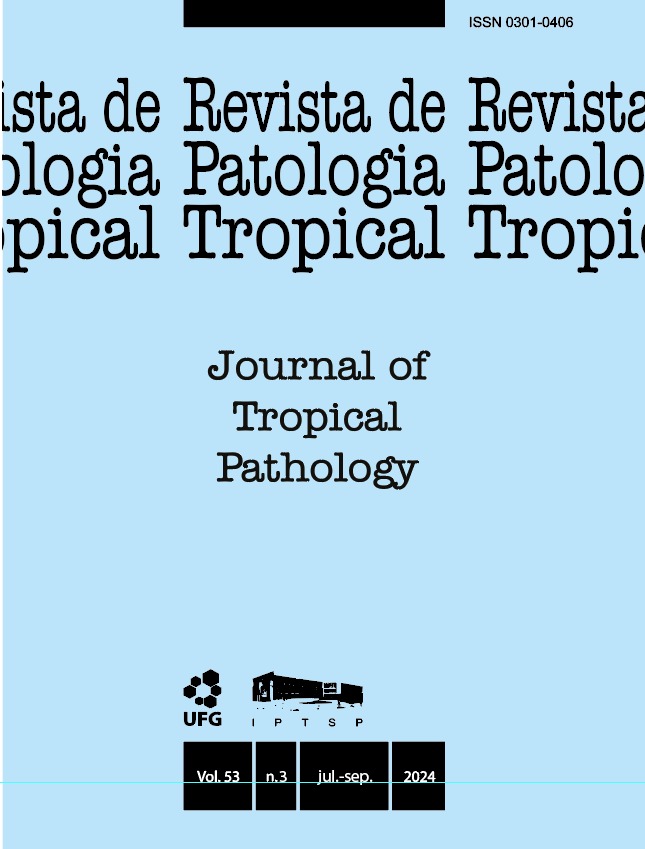First report of Dicrocoelium sp. In hoary fox (Lycalopex vetulus lund 1842) (carnivora: canidae) feces
DOI:
https://doi.org/10.5216/rpt.v53i3.80008Abstract
The hoary fox (Pseudalopex vetulus), endemic to Brazil's Cerrado region, is a wild canid species facing ecological pressures from urbanization and habitat fragmentation. These pressures increase the risk of pathogen transmission between wild and domestic animals, particularly in rural and peri-urban areas. This study reports the first instance of Dicrocoelium sp. and Hepatozoon spp. infections in a wild female hoary fox in Southeast Brazil. The fox, presented with neurological disorders, dehydration, and poor nutritional condition, was hospitalized and subjected to a series of parasitological and clinical tests. Blood smears and fecal examinations revealed the presence of Hepatozoon sp. gametocytes and a significant number of Dicrocoelium eggs. The fox received treatment with albendazole, enrofloxacin, and N-acetylcysteine, showing progressive improvement before being reintroduced to its habitat. This study highlights the significance of parasitic infections in wild canids, emphasizing the need for further research on the ecological and health impacts of such infections. It also underscores the importance of comprehensive fecal and hematological examinations in the clinical assessment of wild fauna and raises awareness about the potential of wild canids as reservoirs for zoonotic parasites.
KEY WORDS: Zoonosis; one health; canids.
Downloads
Downloads
Published
How to Cite
Issue
Section
License
The manuscript submission must be accompanied by a letter signed by all authors stating the full name and email address, confirming that the material has not been published or is under consideration for publication elsewhere, and agreeing to transfer copyright in all media and formats for Journal of Tropical Pathology. The authors will not be paid for published articles. They are solely responsible for the content of those articles, even if the Editor holds the right to adjust them to the norms of the journal.
The reviewers will not be paid for the peer review process.

